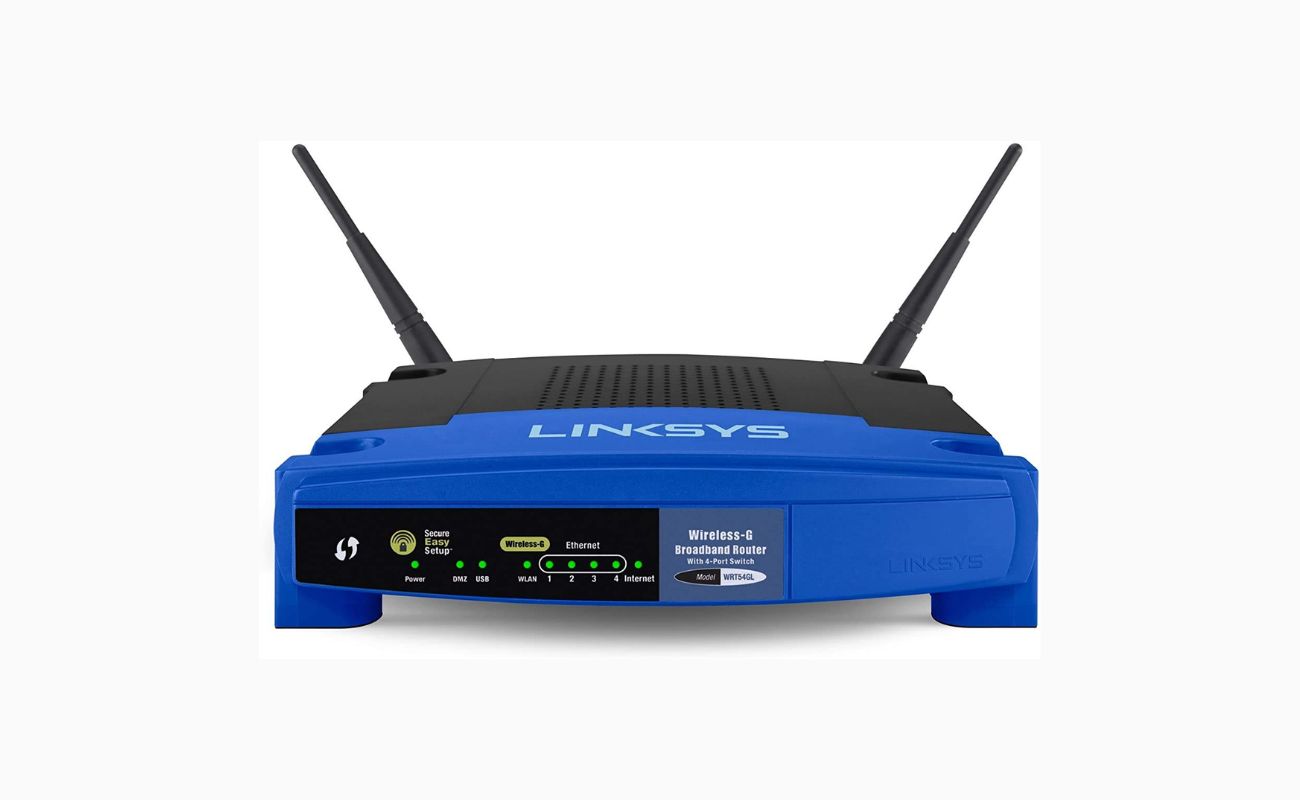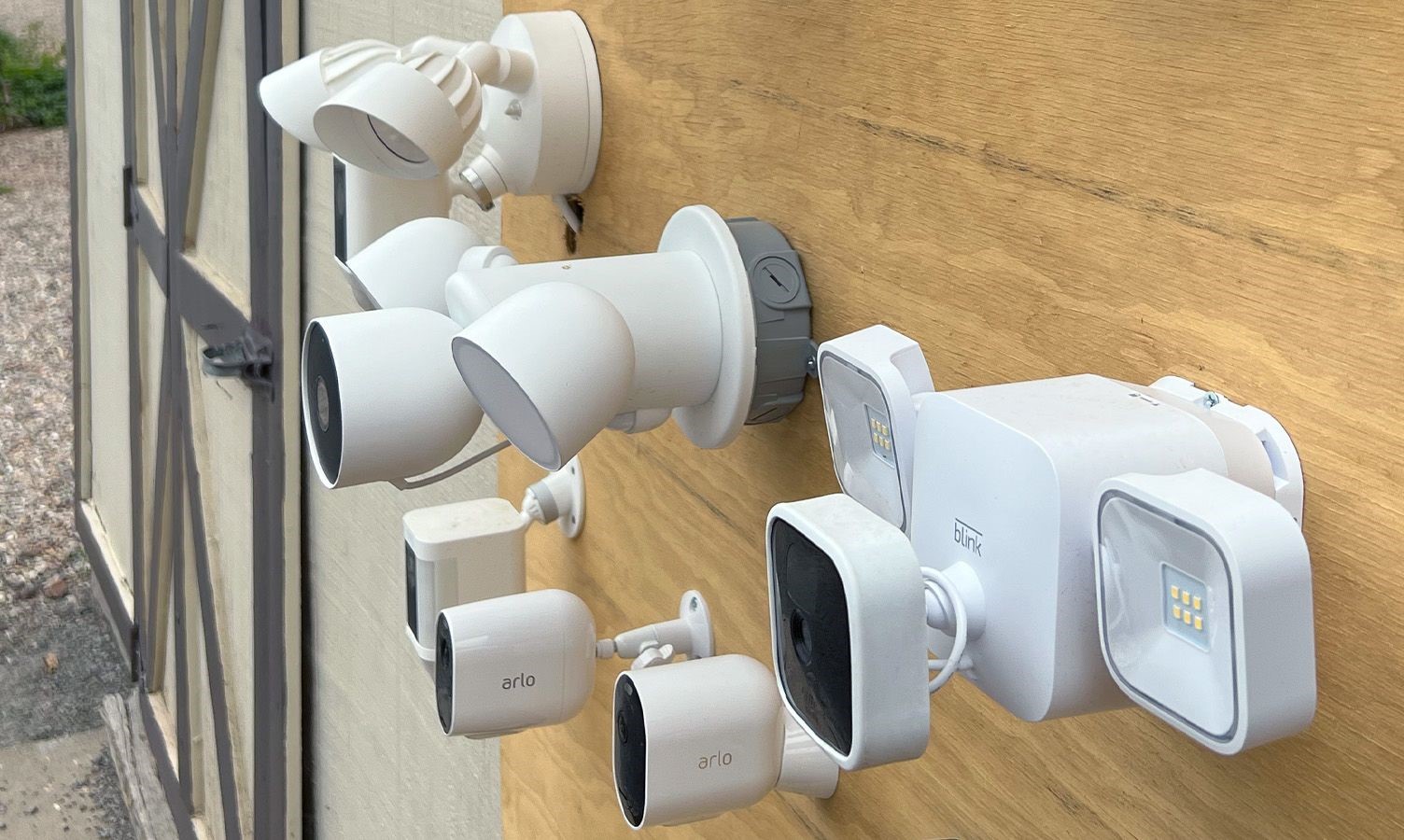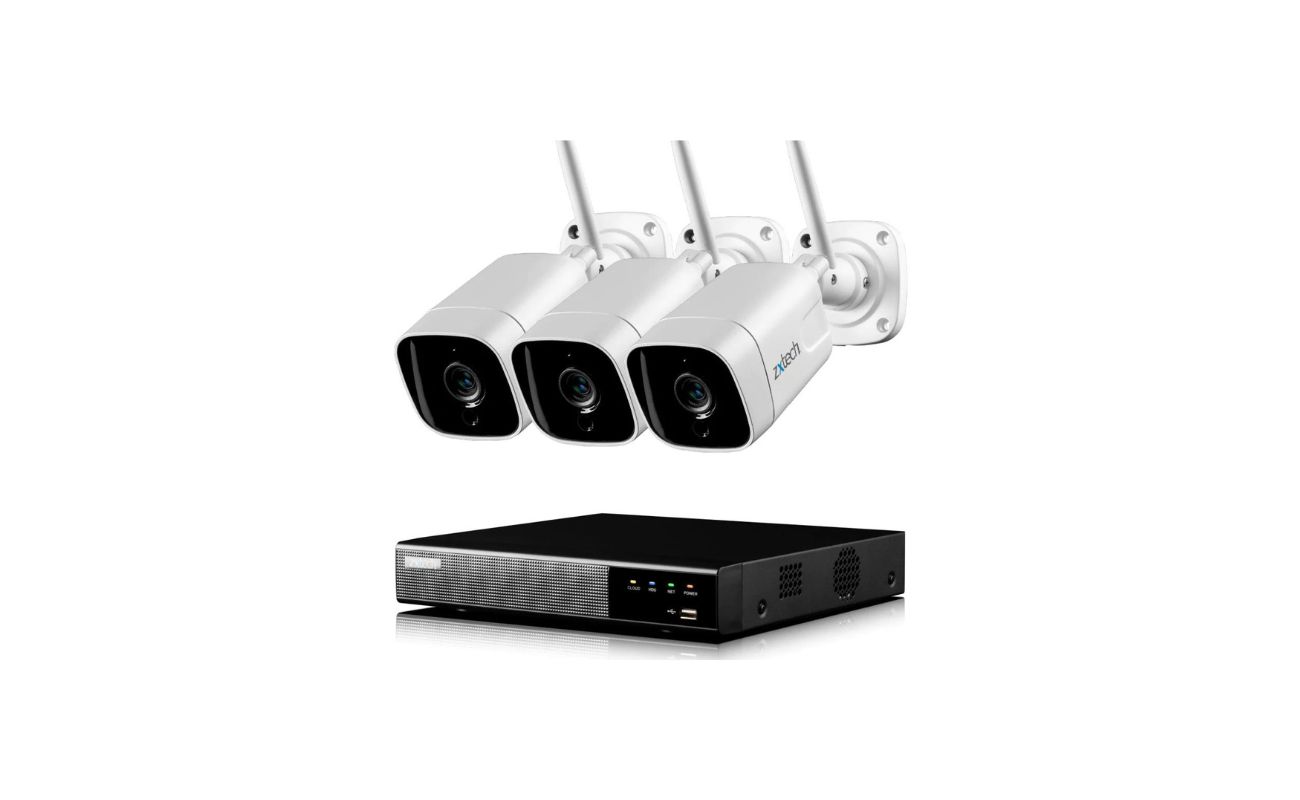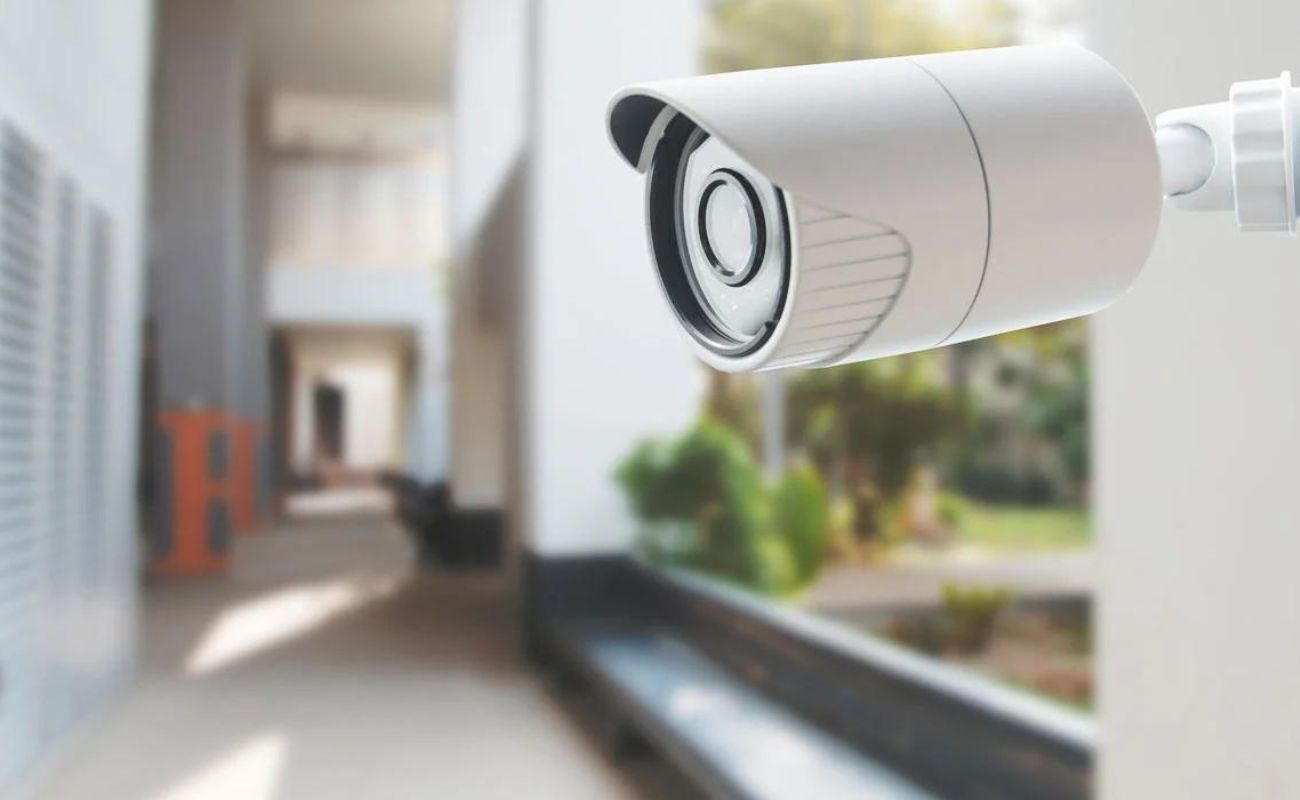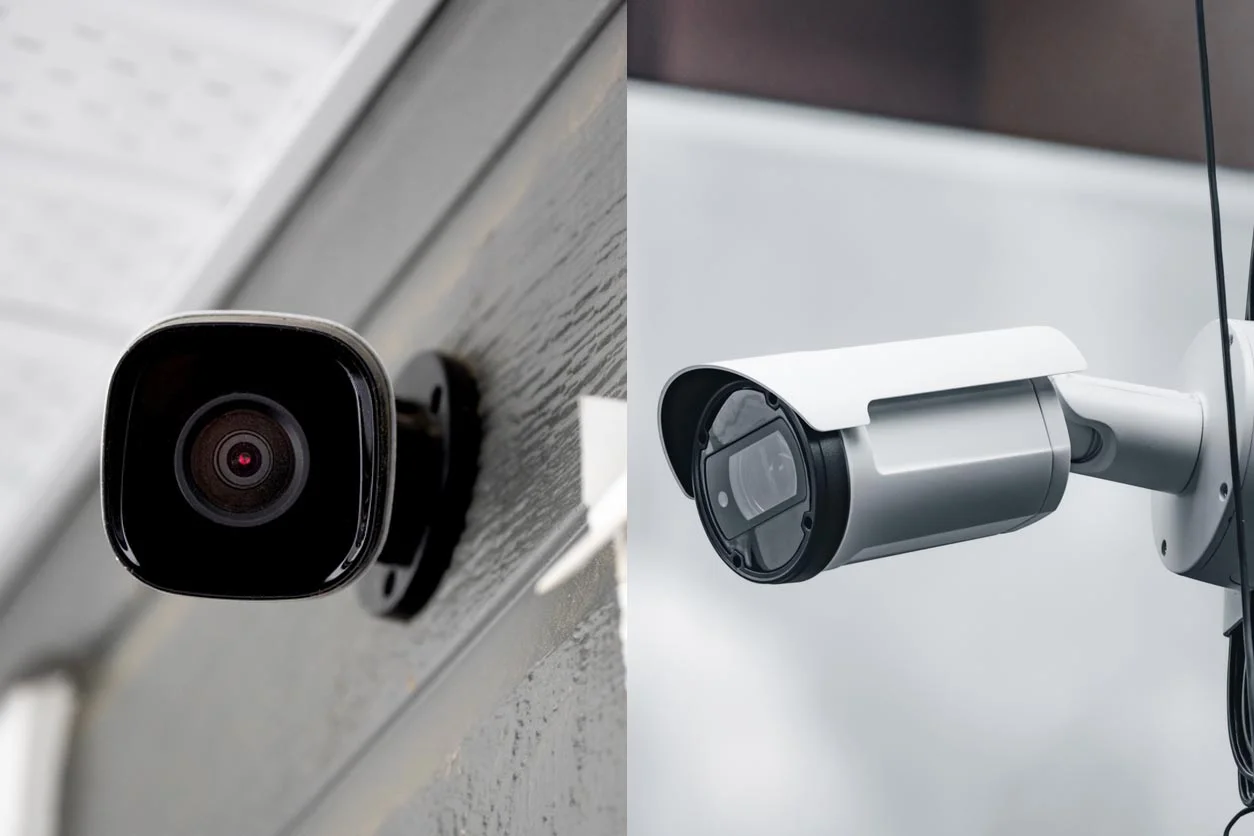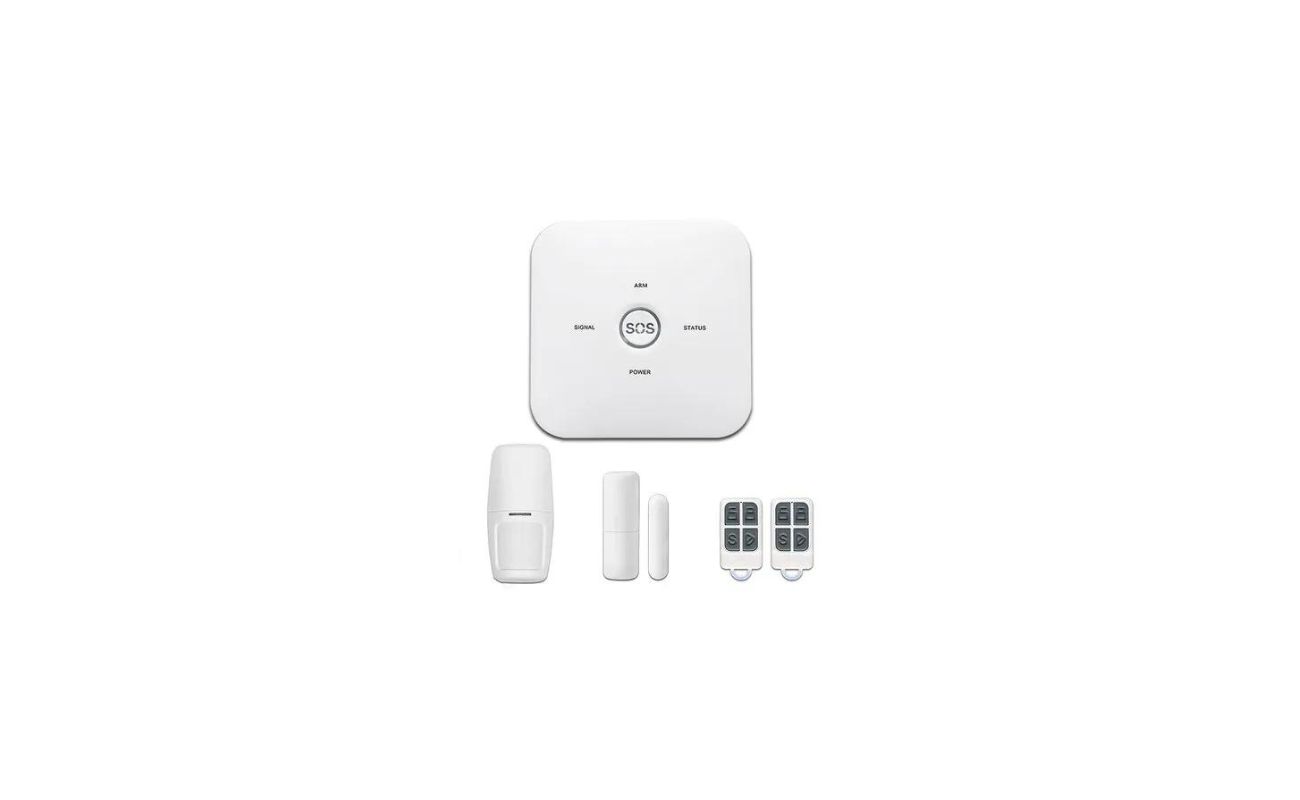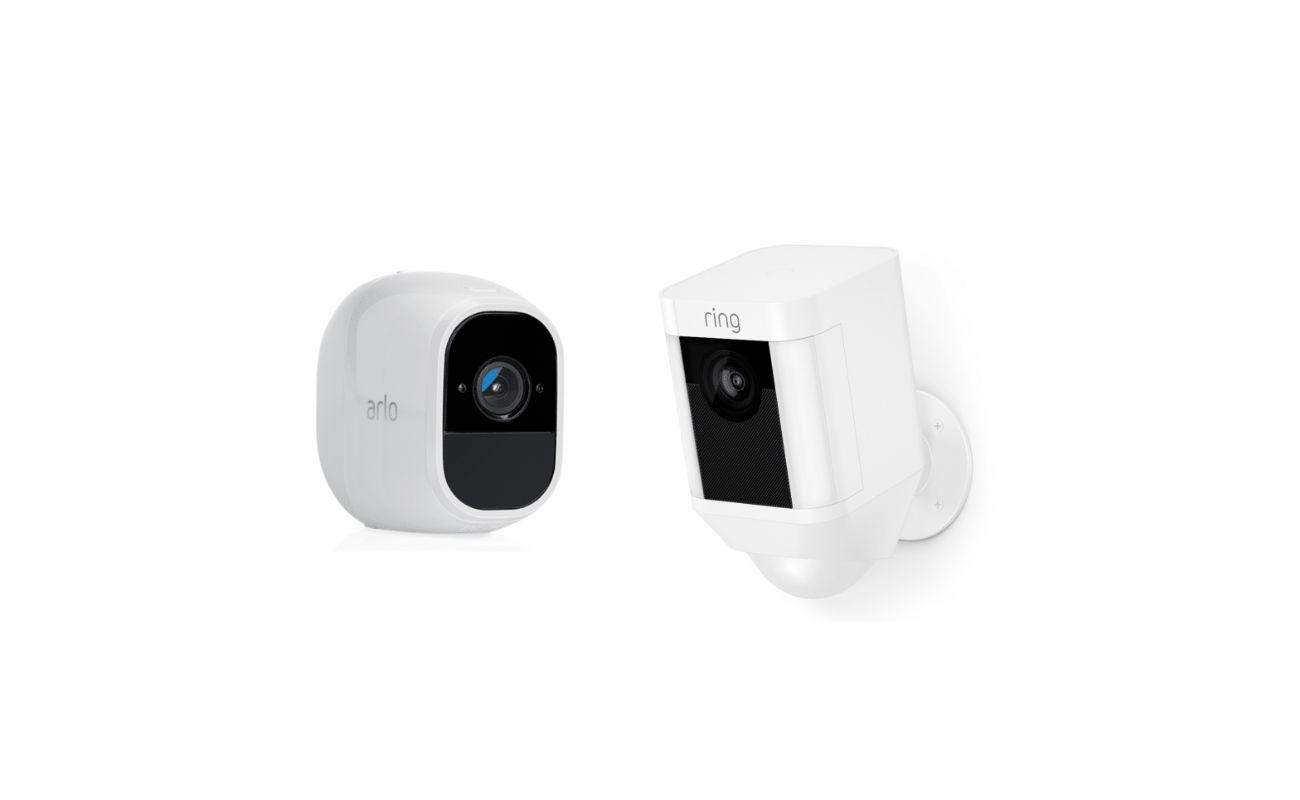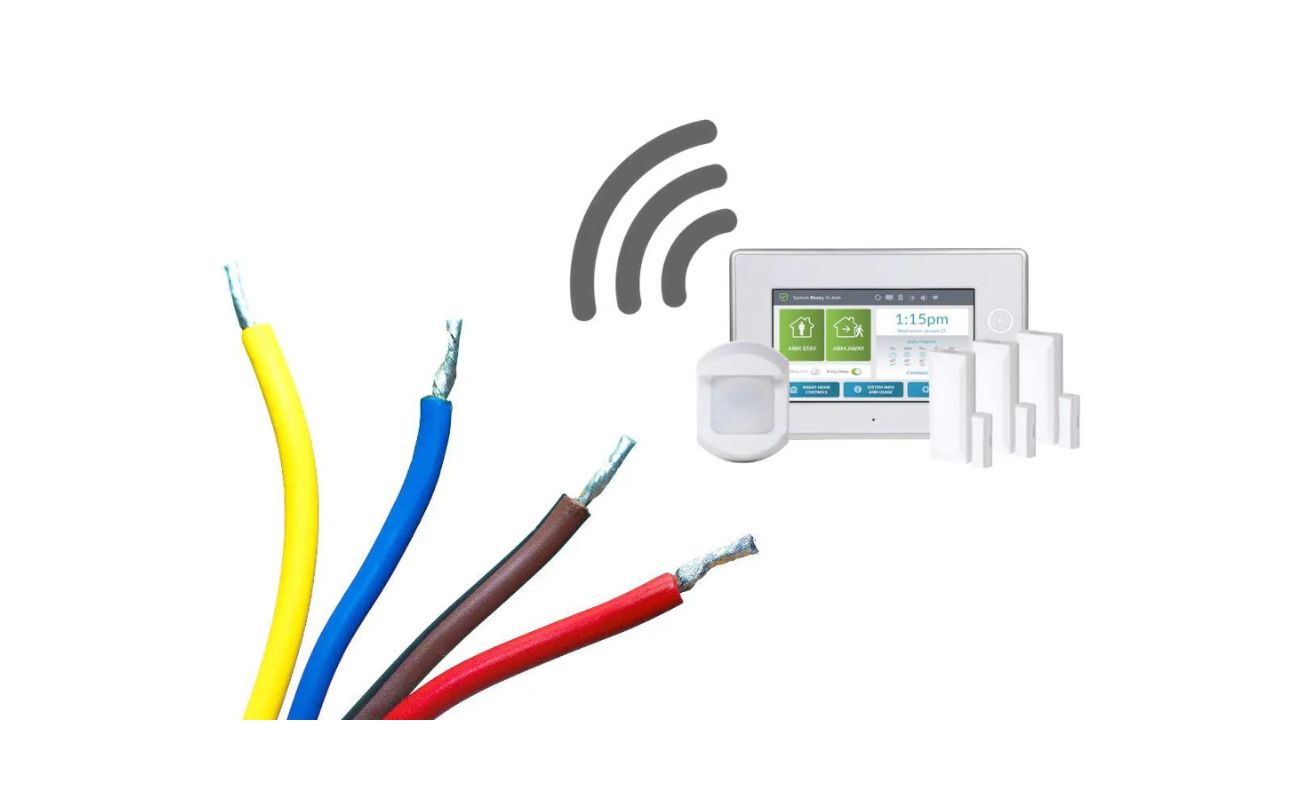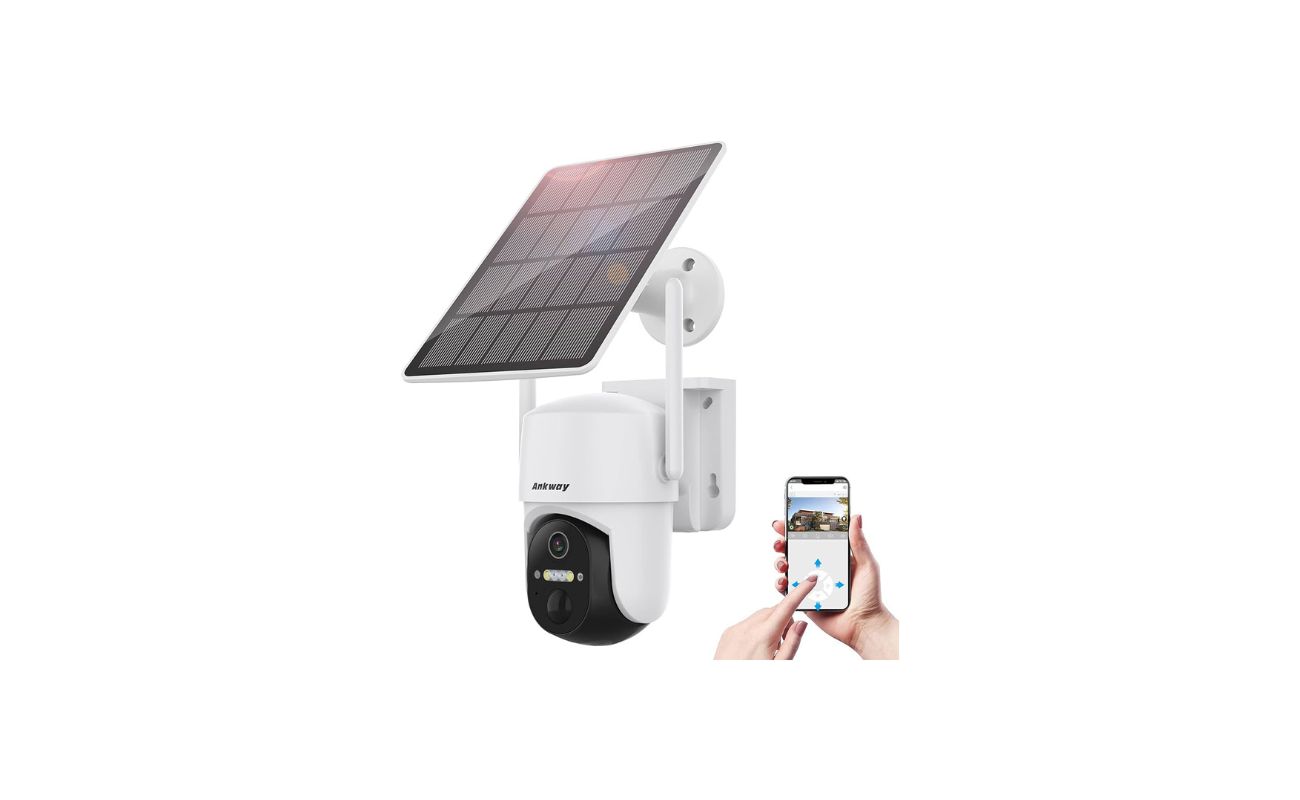Home>Home Security and Surveillance>Which Wireless Security To Use For Airport Base Station


Home Security and Surveillance
Which Wireless Security To Use For Airport Base Station
Modified: March 6, 2024
Looking to enhance your home security and surveillance at the airport base station? Discover the best wireless security options for maximum protection and peace of mind.
(Many of the links in this article redirect to a specific reviewed product. Your purchase of these products through affiliate links helps to generate commission for Storables.com, at no extra cost. Learn more)
Introduction
Welcome to the world of wireless security for airport base stations. In today’s technological era, airports are not only busy hubs for travelers but also important centers of information exchange and communication. With the increasing reliance on wireless networks, it becomes crucial to ensure the security of these networks to safeguard sensitive data and protect against potential threats.
Wireless security refers to the measures taken to protect wireless networks from unauthorized access, data theft, and other malicious activities. When it comes to airport base stations, choosing the right wireless security protocol is essential to maintain the integrity and privacy of the network.
In this article, we will explore the different types of wireless security protocols available for airport base stations and discuss the pros and cons of each option. By understanding these protocols, you will be empowered to make an informed decision to secure your airport’s wireless network effectively.
Key Takeaways:
- Choose WPA2 or WPA3 for airport base station wireless security. They offer strong encryption and protection against unauthorized access, ensuring data privacy and network integrity.
- Consider security strength, network size, and future-proofing when selecting a wireless security protocol. Strive for a balance between robust protection and user-friendly experience.
Types of Wireless Security
When it comes to securing a wireless network, there are several options to consider. Each type of wireless security protocol offers a different level of protection, and it’s essential to understand the strengths and weaknesses of each. Let’s take a closer look at the most common types of wireless security:
- WEP (Wired Equivalent Privacy): WEP was the first encryption standard for wireless networks. It is the oldest and least secure option available. WEP uses a shared key to encrypt data, but its encryption algorithms are easily cracked. As a result, WEP is no longer recommended for securing wireless networks due to its vulnerability to attacks.
- WPA (Wi-Fi Protected Access): WPA was introduced as an improvement over WEP. It uses stronger encryption methods and provides better security for wireless networks. WPA offers two versions – WPA-Personal and WPA-Enterprise. WPA-Personal, also known as WPA-PSK (Pre-Shared Key), requires a pre-shared passphrase to authenticate devices. WPA-Enterprise, on the other hand, utilizes a RADIUS server for authentication, making it more suitable for larger networks.
- WPA2 (Wi-Fi Protected Access 2): WPA2 is currently the most widely used and recommended wireless security protocol. It provides stronger encryption and better security than its predecessor, WPA. Like WPA, WPA2 offers both personal and enterprise versions. WPA2-Personal is suitable for small-scale networks, while WPA2-Enterprise is ideal for larger organizations that require stronger authentication through a RADIUS server.
- WPA3 (Wi-Fi Protected Access 3): WPA3 is the latest iteration of the Wi-Fi security protocol. It offers enhanced security features to protect against emerging threats. WPA3 builds upon the foundation of WPA2 and introduces stronger encryption and authentication mechanisms. Additionally, WPA3 offers individualized data encryption, protecting communications between devices on the same network.
It’s important to note that the availability and compatibility of these wireless security protocols may vary depending on the age and model of your airport’s base station. Therefore, it’s crucial to check the specification and firmware updates of your device to ensure compatibility with the desired wireless security protocol.
WEP (Wired Equivalent Privacy)
WEP, which stands for Wired Equivalent Privacy, was one of the earliest encryption standards developed for wireless networks. Despite its introduction more than two decades ago, it is the least secure option among the available wireless security protocols.
WEP uses a shared key authentication method, where the same encryption key is used by all devices on the network. This shared key is used to encrypt and decrypt data transmitted over the wireless network. The encryption algorithm used in WEP is called RC4, which encrypts packets using a 40-bit or 104-bit encryption key.
However, WEP is highly susceptible to security breaches due to several inherent vulnerabilities. One major weakness is the size of the encryption key. The 40-bit encryption key is relatively easy to crack, and the 104-bit key, while more secure, can still be compromised with modern decryption techniques.
Another significant vulnerability of WEP is its weak initialization vector (IV). IV is used to initialize the encryption process and should be a unique value for each packet. However, in WEP, the IV is reused, making it easier for attackers to crack the encryption key by analyzing the patterns in the encrypted data streams.
WEP’s security flaws extend further, as it lacks a robust authentication mechanism to verify the identity of connecting devices. This makes it susceptible to spoofing attacks, where unauthorized devices can masquerade as legitimate ones to gain access to the network.
Given its vulnerabilities and the availability of more secure options, it is strongly recommended to avoid using WEP for securing wireless networks, particularly in critical environments like airport base stations. Upgrading to a stronger security protocol, such as WPA2 or WPA3, is crucial to ensure the confidentiality and integrity of the network and protect against unauthorized access and data breaches.
WPA (Wi-Fi Protected Access)
Wi-Fi Protected Access (WPA) is a wireless security protocol that was introduced to address the vulnerabilities of its predecessor, WEP. WPA offers improved encryption and authentication mechanisms, making it a more secure option for protecting wireless networks, including airport base stations.
WPA offers two versions – WPA-Personal and WPA-Enterprise – each designed to cater to different network environments and security requirements.
WPA-Personal, also known as WPA-PSK (Pre-Shared Key), is suitable for small-scale networks. It requires a pre-shared passphrase or key, which is shared among all devices on the network. This passphrase is used to generate the encryption key and authenticate devices. WPA-Personal uses the Temporal Key Integrity Protocol (TKIP) encryption algorithm to secure data transmission over the network.
WPA-Enterprise, on the other hand, is designed for larger organizations and networks that require stronger authentication. It incorporates a RADIUS (Remote Authentication Dial-In User Service) server, which handles the authentication process. Each client device is assigned a unique set of credentials, often consisting of a username and password, which are validated by the RADIUS server. WPA-Enterprise uses a more advanced encryption algorithm called Advanced Encryption Standard (AES), offering stronger protection for data transmission.
Compared to WEP, WPA provides several security enhancements. One significant improvement is the dynamic encryption key feature. Instead of using a static key for all data packets, WPA dynamically generates a new encryption key for every packet, making it more difficult for attackers to decipher the information.
Another important security feature of WPA is message integrity checking. WPA incorporates the Message Integrity Check (MIC) protocol, which ensures that the data packets have not been tampered with during transmission. This helps prevent unauthorized modifications to the data.
Choosing WPA as the wireless security protocol for airport base stations provides a higher level of security than WEP. However, it’s important to note that WPA is still susceptible to some vulnerabilities, especially when using the WPA-Personal mode. Upgrading to the more advanced WPA2 or WPA3 protocols is recommended for enhanced security.
WPA2 (Wi-Fi Protected Access 2)
WPA2 (Wi-Fi Protected Access 2) is the successor to WPA and is currently the most widely used wireless security protocol. It offers enhanced security features and stronger protection against unauthorized access and data breaches, making it an excellent choice for securing airport base stations and other wireless networks.
Similar to WPA, WPA2 also offers two versions – WPA2-Personal and WPA2-Enterprise – to cater to different network environments and security requirements.
WPA2-Personal, also known as WPA2-PSK (Pre-Shared Key), is suitable for small-scale networks. It requires a pre-shared passphrase, similar to WPA-Personal, which is used to generate the encryption key for data transmission. WPA2-Personal uses the Advanced Encryption Standard (AES) encryption algorithm, which offers stronger protection compared to the TKIP encryption used in WPA.
WPA2-Enterprise, like WPA-Enterprise, utilizes a RADIUS server for authentication. Each client device is assigned a unique set of credentials to validate their identity. WPA2-Enterprise also employs the AES encryption algorithm, ensuring secure data transmission between devices on the network.
One of the key advantages of WPA2 over its predecessor is its resistance to brute-force attacks. WPA2 implements a stronger encryption algorithm and provides more robust key management, making it significantly harder for attackers to crack the encryption key.
Moreover, WPA2 features stronger authentication methods, such as 802.1X/EAP (Extensible Authentication Protocol), which provides a framework for secure authentication and key distribution. This makes it more difficult for unauthorized users to gain access to the network.
While WPA2 offers significant improvements over WPA in terms of security, it’s important to keep in mind that vulnerabilities can still exist. For example, if weak passwords or passphrases are used, the overall security of the network can be compromised. Therefore, it’s essential to follow best practices for creating robust and unique passwords to enhance the effectiveness of WPA2.
Overall, WPA2 is considered a highly secure wireless security protocol and is widely supported by modern devices and access points. However, with the introduction of WPA3, which further enhances security, considering an upgrade to WPA3 may be worth exploring for even stronger protection in the future.
When setting up a wireless security for your Airport Base Station, it’s important to use WPA2 or WPA3 encryption for the best protection. Avoid using WEP as it is outdated and easily compromised.
Read more: Which Wireless Security Protocol Uses AES
WPA3 (Wi-Fi Protected Access 3)
WPA3 (Wi-Fi Protected Access 3) is the latest iteration of the Wi-Fi security protocol and represents a significant advancement in wireless network security. With enhanced encryption and authentication mechanisms, WPA3 offers even stronger protection against emerging threats, making it a compelling choice for securing airport base stations and other wireless networks.
WPA3 builds upon the foundation of WPA2 and introduces several key security features to address the evolving security landscape. One of the notable improvements is the adoption of the Simultaneous Authentication of Equals (SAE) handshake protocol, also known as Dragonfly. SAE provides stronger password-based authentication, protecting against offline dictionary attacks and mitigating password-guessing attacks.
In addition to stronger authentication, WPA3 introduces individualized data encryption for each device on the network. Previously, WPA2 employed a single encryption key shared among all devices, which posed a potential security risk if one device’s key was compromised. Individualized data encryption addresses this concern by encrypting data transmissions with unique session keys, enhancing the overall security of the network.
Another significant security enhancement in WPA3 is the protection against offline attacks. With WPA2, attackers could capture the encrypted Wi-Fi network traffic and attempt to crack the encryption key offline. In WPA3, even if the encrypted traffic is captured, the encryption key remains secure, ensuring the confidentiality of transmitted data.
Although WPA3 presents robust security measures, it’s important to note that its widespread adoption may take time, as older devices and access points may not support this latest protocol. However, most new devices are expected to support WPA3, ensuring compatibility for future-proofing your airport’s wireless network.
When upgrading to WPA3, it’s crucial to consider the backward compatibility with existing devices. WPA3 allows for a transitional mode, which supports both WPA2 and WPA3 to ensure seamless connectivity for older devices that do not support the new protocol.
Overall, WPA3 represents a significant leap forward in wireless network security, offering improved authentication, encryption, and protection against common attack vectors. As the adoption of WPA3 continues to expand, it is highly recommended for securing airport base stations and any other wireless networks where data privacy and network integrity are paramount.
Comparison of Wireless Security Options
When it comes to securing airport base stations or any wireless network, it is crucial to compare the different wireless security options to determine the most suitable choice. Let’s take a look at the key factors for comparison:
- Security Strength: WEP is the weakest option, with known vulnerabilities that make it highly susceptible to attacks. WPA offers better security than WEP, while WPA2 and WPA3 provide stronger encryption and authentication mechanisms, making them more secure choices.
- Encryption Algorithm: WEP uses the RC4 algorithm, which is easily crackable. WPA and WPA2 utilize the TKIP or AES encryption algorithms, with WPA2 using the stronger AES algorithm. In contrast, WPA3 exclusively uses the AES algorithm with higher encryption standards.
- Authentication: WEP and WPA-Personal (PSK) use a pre-shared key for device authentication, while WPA-Enterprise and WPA2-Enterprise utilize a RADIUS server for more secure device authentication. WPA3 introduces the Simultaneous Authentication of Equals (SAE) protocol for stronger password-based authentication.
- Security Features: WEP lacks advanced security features, while WPA and WPA2 provide dynamic encryption keys, message integrity checking, and resistance against brute-force attacks. WPA3 offers individualized data encryption, protection against offline attacks, and improved password-based authentication.
- Compatibility: WEP is widely supported but is considered outdated and not recommended. WPA and WPA2 are compatible with most devices, with WPA3 gaining support in newer devices. However, older devices may not support WPA3 without a transitional mode.
Considering these factors, WPA2 is currently the most widely used and recommended wireless security option. It provides strong encryption, robust authentication, and compatibility with a wide range of devices. WPA3, the latest protocol, offers additional security enhancements and should be considered for future-proofing your network.
It’s important to note that choosing the right wireless security option is only one aspect of securing a wireless network. Other best practices, such as regularly updating firmware, using strong passwords, and monitoring network traffic, should also be implemented to ensure comprehensive network security.
Factors to Consider when Choosing Wireless Security for Airport Base Station
Securing the wireless network of an airport base station is of utmost importance to protect sensitive data, ensure uninterrupted operations, and maintain the privacy of communication. When choosing the appropriate wireless security protocol, consider the following factors:
- Security Strength: Evaluate the security strength of each wireless security option. Consider the vulnerabilities and potential risks associated with each protocol. Choose a protocol that offers robust encryption, authentication, and protection against known attack vectors.
- Network Size and Complexity: Assess the size and complexity of the airport’s wireless network. Determine if it is a small-scale network or a large-scale network requiring enterprise-grade security. For larger networks, protocols with stronger authentication mechanisms like WPA2-Enterprise or WPA3-Enterprise may be more suitable.
- Compatibility: Check the compatibility of the wireless security protocol with the existing devices and access points in the airport’s network infrastructure. Ensure that the chosen protocol is supported by the devices and can be seamlessly integrated into the network without causing compatibility issues.
- Regulatory Compliance: Take into account any regulatory requirements or industry standards that may apply to the airport’s security infrastructure. Ensure that the chosen wireless security protocol aligns with the relevant regulations and standards, such as those pertaining to data privacy and protection.
- Future-Proofing: Consider the longevity and future-proof capabilities of the chosen wireless security protocol. Take into account the protocol’s compatibility with upcoming technologies and advancements in wireless security. Evaluate if the protocol has a roadmap for updates and improvements to address emerging threats.
- User Experience: Consider the user experience and ease of use associated with the wireless security protocol. Evaluate the ease of configuration, management, and troubleshooting to ensure a smooth and efficient operation of the airport’s network. Also, consider the impact of security measures on user productivity and convenience.
By considering these factors, airport authorities can make an informed decision when choosing the wireless security protocol for their base station. It’s important to strike a balance between security and usability, ensuring that the chosen protocol provides adequate protection while meeting the unique requirements of the airport’s network infrastructure.
Conclusion
Securing the wireless network of an airport base station is a critical task to protect sensitive data, maintain operational efficiency, and ensure communication privacy. Choosing the right wireless security protocol is crucial to ensure the integrity and confidentiality of the network.
In this article, we explored the different wireless security options available for airport base stations: WEP, WPA, WPA2, and WPA3. We discussed the strengths and weaknesses of each protocol, comparing their security features, encryption algorithms, and authentication mechanisms.
We learned that WEP, although the oldest protocol, is highly vulnerable to attacks and should be avoided. WPA offers better security than WEP, while WPA2 is the most widely used and recommended protocol with stronger encryption and authentication. WPA3, the latest protocol, introduces advanced security features for enhanced protection.
When choosing a wireless security protocol for an airport base station, factors such as security strength, network size, compatibility, regulatory compliance, future-proofing, and user experience must be considered. These factors ensure that the selected protocol aligns with the specific needs, regulations, and growth plans of the airport’s network infrastructure.
Ultimately, the goal is to strike a balance between robust security measures and a seamless user experience. Regular updates, password management, and other best practices should also be implemented to enhance the overall security posture.
In conclusion, securing a wireless network is a continuous effort that requires careful consideration and implementation of the appropriate wireless security protocol. By making an informed decision and staying vigilant, airport authorities can safeguard their base station’s network and provide a secure and reliable communication infrastructure for staff, passengers, and other stakeholders.
Frequently Asked Questions about Which Wireless Security To Use For Airport Base Station
Was this page helpful?
At Storables.com, we guarantee accurate and reliable information. Our content, validated by Expert Board Contributors, is crafted following stringent Editorial Policies. We're committed to providing you with well-researched, expert-backed insights for all your informational needs.
